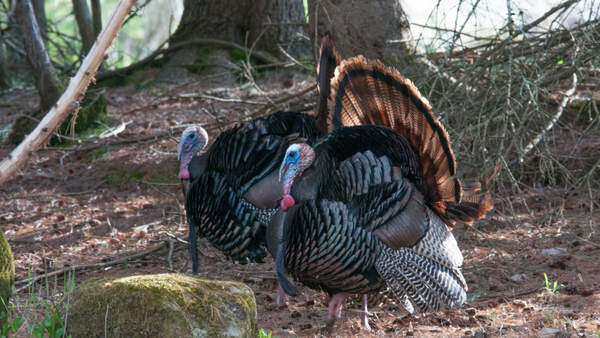Vermont's Migratory Game Bird Seasons Announced
MONTPELIER, Vt. — The Vermont Fish and Wildlife Department has announced the 2023-2024 migratory game bird hunting season dates and bag limits.
A printable copy of the Migratory Bird Syllabus can be downloaded from the Vermont Fish and Wildlife Department’s website (www.vtfishandwildlife.com) under "Hunt" – "Waterfowl." A printed version also will be available from license agents and post offices in August.
A statewide Vermont open hunting season for resident Canada geese will occur Sept. 1-25. The daily bag limit is five Canada geese in the Connecticut River Zone and eight in the rest of the state during this Sept. season. The purpose of the Sept. season is to help control Vermont’s resident Canada goose population prior to the arrival of Canada geese migrating south from Canada.
A second Canada goose hunting season for resident and migrant geese will be held Oct.14-Nov. 27 in the Lake Champlain and Interior Zones with a daily bag limit of three Canada geese in the Lake Champlain Zone and Interior Vermont Zone.
In the Connecticut River Zone, the second Canada goose season will be Oct.5-Nov. 3 and Nov. 22-Dec. 21 with a daily bag limit of two Canada geese.
Duck season this fall opens on Oct.7 in the Lake Champlain and Interior Vermont Zones and on Oct.5 in the Connecticut River Zone. The Lake Champlain Zone has a split season (Oct.7-11 and Nov. 4-Dec. 28). The Interior Vermont Zone has a straight season (Oct.7-Dec. 5). The Connecticut River Zone has a split season (Oct.5-Nov. 3 and Nov. 22-Dec. 21).
Scaup daily bag limits are a hybrid season this year. The Lake Champlain (Oct.7-11 & Nov. 4-Dec. 8) and Interior (Oct.7-Nov. 15) zones allow the harvest of one scaup daily. The remainder of the season you are allowed two scaup daily. Within the Connecticut River Zone, you are allowed only one scaup daily for the entire season.
Vermont’s youth waterfowl hunting weekend will be Sept. 23 and 24. Resident and nonresident hunters 17 years of age or younger on those dates may hunt ducks and geese within the Lake Champlain and Interior Vermont Zones during this weekend while accompanied by an adult 18 or older. In the Connecticut River Zone, youth must be 15 years of age or younger on those dates. Both adult and youth must have Vermont hunting licenses. The adult may not hunt or carry a firearm. Youth ages 16 and 17 must have a Vermont Migratory Waterfowl tag and federal duck stamp.
Woodcock hunting season is Sept. 30- Nov. 13 statewide with a three-bird bag limit.
In addition to a hunting license, a waterfowl hunter 16 or older must carry a current federal duck stamp and Vermont Migratory Waterfowl tag to hunt waterfowl in Vermont. Federal stamps are sold at post offices, federal refuges, or online at www.fws.gov/birds/get-
All migratory game bird (woodcock, ducks and geese) hunters must also be registered with the Harvest Information Program (H.I.P.) in each state they hunt. You can register on Vermont Fish and Wildlife Department’s website or call toll-free 1-877-306-7091. After providing some basic information, you will receive your annual H.I.P. registration number, which is then recorded on your hunting license.
The hunting season dates, bag limits and related regulations for all migratory birds are set annually within a framework established by the U.S. Fish and Wildlife Service, and in coordination with New York and New Hampshire.
Waterfowl season dates and bag limits are set in three zones: Lake Champlain, Interior Vermont, and Connecticut River. The New Hampshire Fish and Game Department sets the season dates and bag limits for the Connecticut River Zone.















